www.industry-asia-pacific.com
05
'23
Written on Modified on
Digital Transformation in Oil & Gas Industry
Milton D’Silva reports on the oil and gas industry’s digital transformation journey.
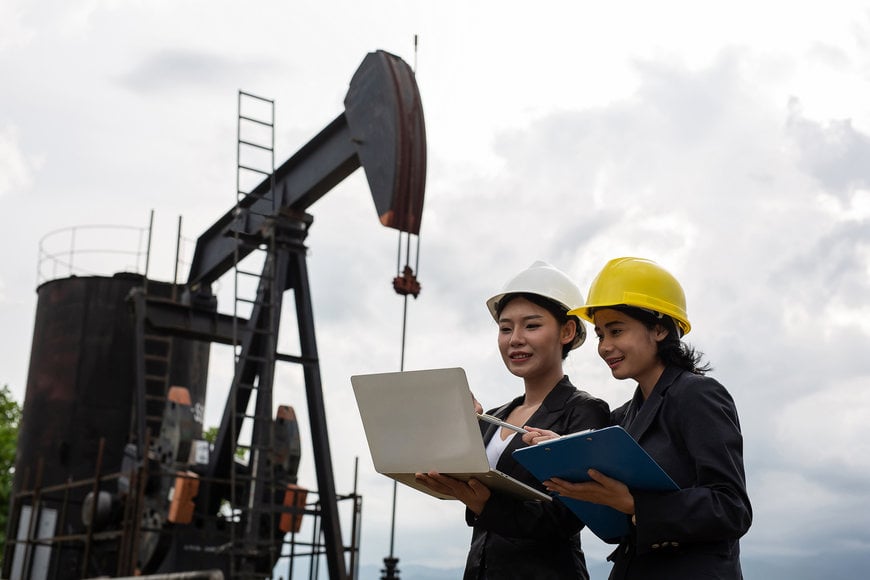
The oil and gas industry, long characterised by its traditional practices and complex operations, is undergoing a profound transformation driven by digitalisation. An early adopter of automation in its operations, the oil and gas industry was a bit slow in digitalisation, which other industries, most notably discrete manufacturing, were quick to embrace. It is not a case of total negligence because the oil and gas industry had already started the process of digitisation like other sectors, but it was just that – use of digital technologies in existing processes.
Digital transformation, on the other hand, goes beyond digitisation and digitalisation, to innovate and create new processes enabled by a host of emerging technologies. The situation thus is changing rapidly as the process industry in general, oil and gas in particular, is now in the midst of its own digital transformation journey, ramping up implementation. This covers increased use of software; IoT-enabled smart sensor applications; and artificial intelligence and machine learning tools for data analytics. Among the more advanced technologies, the various types of ‘reality’ experiences like AR/VR/MR/ER, now converging under the metaverse umbrella, are deployed too. The advantages of digital transformation are too well-known to bear repetition, but in a nutshell, these are lower costs, greater efficiencies, and better customer experiences, but above all, the creation of new business models in the ultra competitive global markets.
The Case for Digitalisation in Oil and Gas Industry
The Covid-19 pandemic caused a lot of disruption globally impacting not just human health but also that of the economy. The case of the oil and gas industry is no different, but even in the best of times, price volatility impacts this industry more than any other, influencing not just investment decisions but also causing geopolitical turmoil. Just before the pandemic, global oil and gas markets were experiencing a prolonged period of stagnation with price points touching a 30-year low, hitting the industry hard and making it difficult to invest in upstream operations.
According to a report by the International Energy Agency (IEA), the oil and gas industry needs continuous investment in upstream projects as production from existing fields declines at a rate of roughly 8% per year in the absence of any investment, which is larger than any plausible fall in global demand. For long, the oil and gas industry has supplied the world with a relatively cheap and reliable supply of fuel and raw materials notwithstanding the periodic oil shocks. At a time when price volatility is a regular feature, the industry needs to optimise efficiencies across the board and improve productivity to mitigate at least some of its impact.
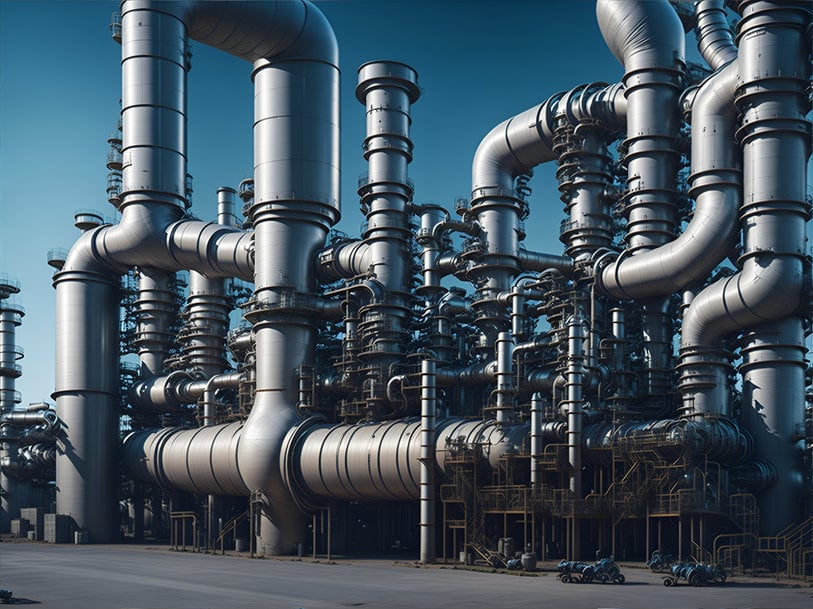
The industry is under increasing pressure to reduce emissions. Image by Pete Linforth from Pixabay
More important is the fact that in a world serious about energy transition, the oil and gas industry cannot simply carry on business as usual. The industry is under increasing pressure to reduce emissions. The IEA notes how alongside the greenhouse gas emissions generated by combustion of fossil fuels like oil and natural gas, there are emissions also from the operation of drilling rigs, pumps, compressors and other equipment needed to extract and process these fuels. The IEA report also draws attention to the relatively high percentage of CO2 emissions caused by the heat and energy required to power upstream processes. Since many of the oilfields are located in remote places with no power from the grid, the upstream operations are largely serviced by electricity generated by gensets that are mostly energy inefficient and highly polluting. This can be remedied by the electrification of these operations with clean and renewable energy. The competition from the renewable energy industry is another looming threat which in the long term is going to contract demand for fossil fuels, putting additional pressure on the oil and gas industry.
If the Covid-19 pandemic caused massive disruption, it also struck a massive blow for digital transformation as enterprises realised the importance of digital technologies in crisis situations. These technologies bring several opportunities to the table, and are not limited to any particular segment of the industry but permeate the upstream, midstream and downstream chain of operations. Players in each segment, from the well to the pump, can streamline operations and optimise the maintenance of machinery and equipment across the entire value chain. The writing on the wall was never clearer – industry needs digital transformation to overcome disruptions and remain competitive.
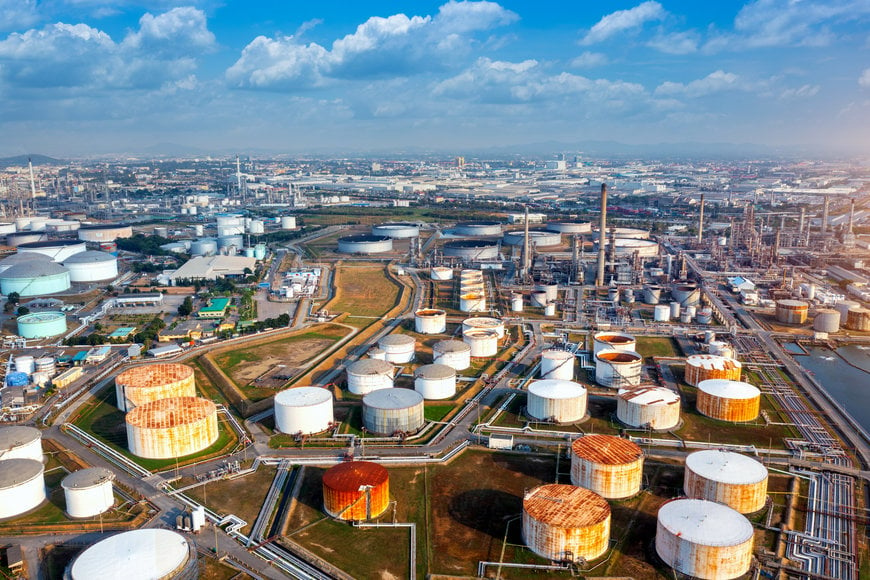
An aerial view of an oil refinery. Image by tawatchai07 on Freepik
Key Digital Technologies Shaping the Industry
Broadly speaking, the process of digital transformation in the oil and gas industry is not much different from other industry segments. It basically conforms to the broad template used by other industries, such as the use of IoT-enabled remote sensors for asset monitoring, big data analytics, application of artificial intelligence and machine learning, blockchain, digital twins and the safety and security aspects. Doing more with less is the operative phrase when it comes to digital technologies, achieving much more than human capabilities alone can accomplish, extending asset life, reducing maintenance costs, minimising downtime, and increasing safety of personnel and equipment.
Internet of Things (IoT): Sensor networks enabled by IoT are revolutionising asset monitoring and predictive maintenance. The traditional maintenance based on fixed schedules is prone to unexpected breakdown caused by a host of factors, mostly an accumulation of minor problems snowballing into major breakdown. Affordable sensors have ushered in the age of smart everything, facilitating the predictive maintenance model based on condition monitoring. With global oil consumption rising post-Covid, companies are under pressure to operate efficiently and maintain a steady output. IoT-enabled sensors monitor every parameter – temperature, pressure, noise, vibrations, et al – on each piece of equipment, machinery, pipelines, etc. Apart from sensors, there are other devices for monitoring like infrared thermal cameras – fixed or mounted on drones or mobile robots; oil and lubricant analysis; and various types of gas sensors and analysers for emission monitoring.
Big Data and Analytics: The oil and gas industry has traditionally been gathering data for decades, and storing it in historians, accessing the same on need basis for troubleshooting. With the growing proliferation of sensors, the volumes of data generated during the process of discovery, drilling and producing oil and gas have increased manifold, and the traditional data historian is simply not equipped to make the required results available in real time. The upstream oil companies are now deploying new tools for predictive analytics for proper representation and cataloging of the data sets for quick access. The accumulated data is used for optimising production with activities like predictive maintenance, anomaly detection, fault diagnostics and prognostics on the one hand, and enhanced oil exploration, new oil prospect identification and seismic trace identification on the other.
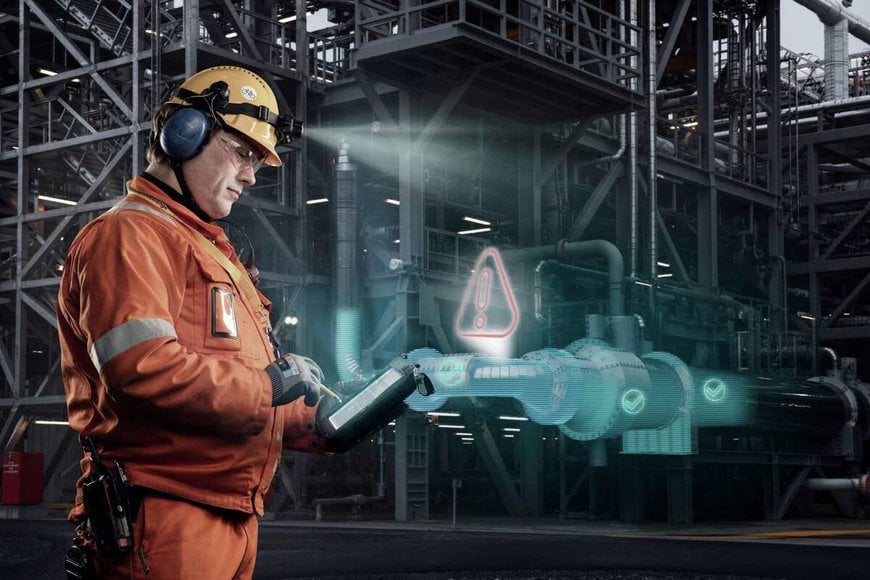
Shells’s Nyhamna Dynamic Digital Twin – dynamic virtual representation of the gas facility. Image source: Shell
Artificial Intelligence (AI) and Machine Learning (ML): Oil exploration is a complex process, expensive and risky, traditionally relying on processes involving locating potential sites based on geological surveys, surface signs and in recent years satellite surveys and seismic imaging. Use of AI and ML has made sifting through the humongous data easy, helping identify potential sites more effectively with the highest probability of finding oil reserves. From demand forecasting to predictive maintenance, AI is redrawing the frontiers for the oil and gas industry encompassing reservoir modeling, drilling optimisation and predictive maintenance. The latter is very critical for asset maintenance and AI solutions help analyse the vast datasets to predict equipment failure before it occurs, avoiding unexpected shutdowns or putting operator safety at risk. In the process, the data historial also gets enriched.
Blockchain: Enhancing transparency and security in supply chain and trading activities is what blockchain – the secure digital ledger of transactions – does effectively to make operations easier in the oil and gas industry. An oft-quoted research study performed by Shell, BP, and Statoil had estimated that adopting blockchain into the oil and gas industry can reduce the transaction execution time by 30%. The fact is blockchain technology offers huge potential for businesses in the oil and gas sector to streamline everyday transactions through the use of smart contracts, achieved mainly through cost reduction by eliminating the intermediaries in the process. Like most other matured digital technologies, blockchain enables transactions in minutes that would otherwise take hours of costly human efforts.
Digital Twins: The concept of digital twins and their applications in asset management and performance optimisation is rapidly gaining centrestage in the oil and gas industry. This is an asset-intensive industry with heavy capital investments so the digital twin in this case must factor in the entire asset lifecycle from design and execution to operations and maintenance. Digital technologies like AI, ML, IoT-enabled sensors, big data and analytics, and cloud computing are contributing in no small measure to enhance the capabilities of the digital twin, a virtual replica of the real operational scenario that facilitates a bird’s eye view of the real situation, enabling prompt and active intervention wherever required. Only a thorough systematic approach can make the implementation of digital twins reflect the actual reality and be relied upon for quality and accuracy. For example, Shell’s Nyhamna Dynamic Digital Twin is a dynamic virtual representation of the gas facility and its behaviour is continuously updated with integrated information reflecting the status of the facility in real time.
Cybersecurity: In the last few years, there have been many cyberattacks on companies and installations including the audacious ransomware attack on Colonial Pipeline in May 2021. Hence cybersecurity has a critical role in protecting digitised oil and gas infrastructure. The industry comprises diverse infrastructure such as refineries, tank farms, pipelines and drilling rigs, which are vulnerable to perimeter threats and cyberattacks. In a connected plant enviroment, and chink in the collective armour can jeopardise the entire operations. In addition, thanks to the legacy systems in most existing installations, integration of IT and OT oerations is often a work in progress, exposing the system to more vulnerabilities. Apart from the safety of the plant and personnel, there is a threat to the environment given the polluting nature of the products. In addition, any breach of the system also puts a lot of other sensitive information at risk of falling into wrong hands.
Real-world Case Studies
Even as the implementation of digital technologies has become more widespread in recent years, it is by no means a recent phenomenon. For an industry with a legacy of over a century and a half, the industry has kept pace with technology trends and ranks among the most automated. What has now gained pace is the process of bringing together all the individual process stages into a connected whole by leveraging digital technologies of the Industry 4.0 era. Presented here are a few real world case studies that examine the progress of the early adopters.
Shell's Smart Fields: Shell, the Anglo-Dutch global major started its Smart Fields programme way back in the year 2004 and has contributed significantly to the technological developments in making digital oilfield a reality. In a paper presented in the year 2006, Shell Brunei Petroleum mentions how the Smart Fields concept was first implemented at Brunei’s Champion West field, which was developed as a fully integrated, remote controlled and operated field. The application of Smart Field is in the areas of production surveillance, real time monitoring and optimisation, smart wells and time lapse reservoir surveillance. This project became a key demonstrator for the Shell group for their digitization efforts. In the process, the company has seen an increase in productivity, increased recovery rate, speedy and superior decision making, reduced downtime and hence costs, and better health, safety, security and environment (HSSE) exposure.
ExxonMobil's Predictive Maintenance: Predictive maintenance helps anticipate failures in equipment and avoids downtime. ExxonMobil, which happens to be the largest non-government owned company in the energy sector, uses predictive maintenance across its diverse portfolio of upstream, midstream and downstream assets. According to a GlobalData research report, the most used predictive maintenance technologies in the oil and gas industry are vibration monitoring, thermography, lubricant oil analysis, and ultrasonic testing. Other techniques include visual inspection, motor current analysis, ferrography, spectrography, and wear particle analysis. ExxonMobil has collaborated with Microsoft to use its Azure cloud computing platform and data analytics tools to deploy predictive maintenance technologies at the Permian shale assets in west Texas and south-east New Mexico. The Azure platform leverages IoT and machine learning (ML) to minimise downtime and increase productivity by enabling predictive maintenance and dynamic routing of field workers.
BP's Blockchain Initiative: Once identified solely with cryptocurrency, blockchain is now seen as a reliable digital distributed ledger and smart contracts facilitator. BP is one of the first oil and gas majors to make use of blockchain to streamline its supply chain. With the three major advantages it offers – higher security, increased transparency and greater efficiency – blockchain has witnessed greater traction in the energy industry since 2017. The same year BP joined two other energy majors, Shell and Statoil, together with trading houses Gunvor, Koch Supply & Trading, and Mercuria; and three banks – ABN Amro, ING and Societe Generale – to form a blockchain-based digital platform for the energy commodity trading industry. This later became VAKT, an independent company focused on creating an industry-wide post-trade processing platform for commodities through blockchain. The VAKT platform is designed for post-transaction management of physical energy commodities, providing a single digital record where all of the details and stages of a trade can be agreed, recorded and seen securely by all partners involved.
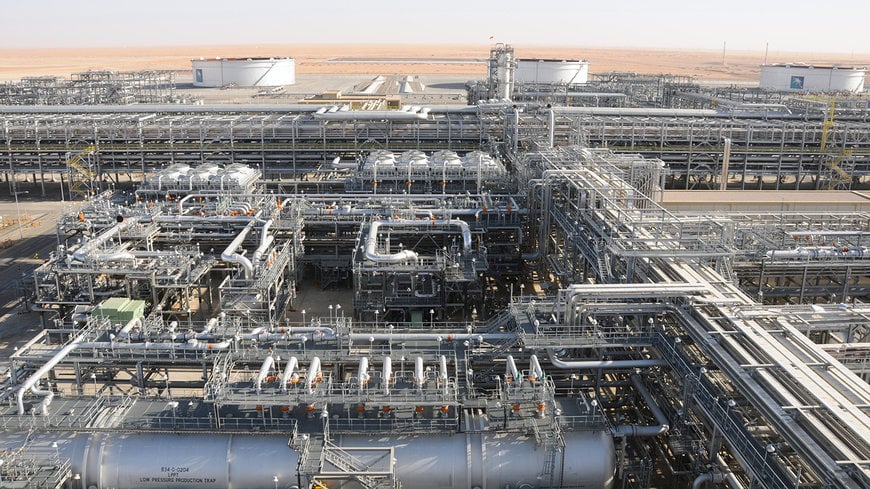
Saudi Aramco’s Khurais facility. Image source: Saudi Aramco
Saudi Aramco's Digital Twin: Saudi Aramco, the world’s largest company by market capitalisation and second largest by revenue, is using digital twins to optimise asset performance. An early adopter of digital technologies, Saudi Aramco has three of its facilities recognised by the World Economic Forum as part of its Global Lighthouse Network (GLN), which showcases companies that are pioneering the use of 4IR to transform factories, value chains, and business models. One of the three Saudi Aramco facilities in the GLN, Khurais, is the world’s largest intelligent oil field, and with over 500 oil wells, has tens of thousands of sensors installed to collect data on every aspect of production and power consumption. All this data feeds into a ‘digital twin’ of Khurais – is a real-time virtual model of the facility that monitors performance, and predicts and diagnoses any problems within the end-to-end operations. The digital twin provides engineers the ability to test planned or proposed adjustments to plant operations in a virtual environment and deploy the most effective ones, without any disruption to the activities of the real plant. According to Saudi Aramco, digital transformation at Khurais has helped the company to increase production, while simultaneously reducing power consumption by 18%, maintenance costs by 30%, and cutting inspection times by around 40%.
Future Trends and Outlook
Even if the digitalisation journey is bringing the oil and gas industry much relief from the cyclical upheavals it is facing, the story is far from over. As mentioned earlier, the world is now battling the climate crisis and preparing for net zero emissions regime in order to hold the global temperature rise to 1.5 degree C. To adhere to the 2050 deadline, which most developed countries have committed to, zero-carbon sources will need to supply 98%-100% of electricity by then. This has put enormous pressure on the oil and gas companies to join the effort for finding enough clean energy sources even as they continue to supply the affordable energy requirements of the day, albeit with reduced emissions. Amidst this scenario, the oil and gas industry has to perform a balancing act between business-as-usual for short-term returns and a calibrated approach towards renewables for long term prospects. It would be interesting to see how the major oil companies have fared on this count and the strategies they are adopting for clean energy.
BP Plc: BP is the fourth-largest investor-owned oil company (not State owned) in the world by revenue, and one of the ‘supermajors’, a vertically integrated company operating in all areas of the oil and gas industry, including exploration and extraction, refining, distribution and marketing, power generation, and trading. The company was an early investor in renewable sources of energy over 4 decades ago, notably in wind and solar, where it also suffered huge losses and for a while put the initiative on the backburner. However, today BP believes renewable energy will be the fastest-growing source of energy, increasing five-fold by 2040, providing around 14% of global primary energy. The company says it is collaborating with exceptional partners on the journey towards net zero and it is working on various projects apart from Wind and Solar energy, including renewable diesel, Ethanol blends, biofuel for aviation, hydrogen and carbon storage.
Shell: The vertically integrated Anglo-Dutch company ranks second among the ‘supermajors’ and is investor owned. The company a while ago informed investors it is no longer an oil and gas company, but an energy transition company. To that end, Shell announced the formation of its New Energies division in 2016, combining its existing low carbon and renewables initiatives in hydrogen, electric vehicle charging, biofuels, and renewable power to focus on long-term energy transition. IN its Energy Transition Report 2022, Shell says it has reduced Scope1 and 2 absolute emissions by 30% in line with the stated objective of 50% reduction by 2030, compared with 2016 levels on a net basis. Other initiatives include: reduction in net carbon intensity by 3.8% (2030 target 20%); USD 4.3 billion investment in low-carbon energy solutions; Increase in electric charging points by 62% to around 1,39,000 points; doubled renewable generation capacity to 6.4 GW; and a slew of investments and acquisitions in the areas of hydrogen, biofuels, renewable natural gas and ethanol, among others.
ExxonMobil: The global No 1 among investor-owned ‘supermajors’, ExxonMobil traditionally avoided following the renewable initiatives of European companies confined its activities to reducing greenhouse gas emissions, advancing biofuels, and carbon capture and storage (CCS) technologies. In the latter, ExxonMobil has around one-third of the world's CCS capacity. In the 2023 Advancing Climate Solutions Progress Report, ExxonMobil says it remains determined to tackle head-on the challenge of strengthening energy supply security and reducing emissions to support a net-zero future while growing value for its shareholders and stakeholders. Among the new initiatives, the company says it increased the amount to invest through 2027 on lower-emission initiatives to approximately $17 billion, up by nearly 15%; reduced Scope 1 and 2 emissions intensity in operated assets by more than 10%, resulting in an approximately 15% absolute reduction, through year-end 2022 vs. 2016 levels; and cut methane emissions intensity from across its operated assets by more than 50% and reduced operated absolute methane emissions by 50% through 2022 vs. 2016 levels.
Saudi Aramco: One of the world’s largest State owned integrated energy and chemicals companies, Saudi Aramco agrees that climate change remains the biggest single challenge of this century.It also believes oil and gas, supported by technological innovations, will prove to be essential in achieving an orderly global energy transition and accepts it has an important role to play in helping to reduce greenhouse gas emissions. The company aims to achieve net-zero Scope 1 and Scope 2 greenhouse gas emissions across its wholly owned and operated assets by 2050. Taking a different view by publicly terming the current energy transition plans as flawed, Saudi Aramco says the switch from hydrocarbons could take decades, necessitating continued investment in conventional resources. However, in October 2022 the company launched a $1.5 billion fund to support an inclusive global energy transition. The Aramco sustainability fund would target investments globally, with initial focus on areas including carbon capture and storage, greenhouse gas emissions, as well as hydrogen, ammonia and synthetic fuels.
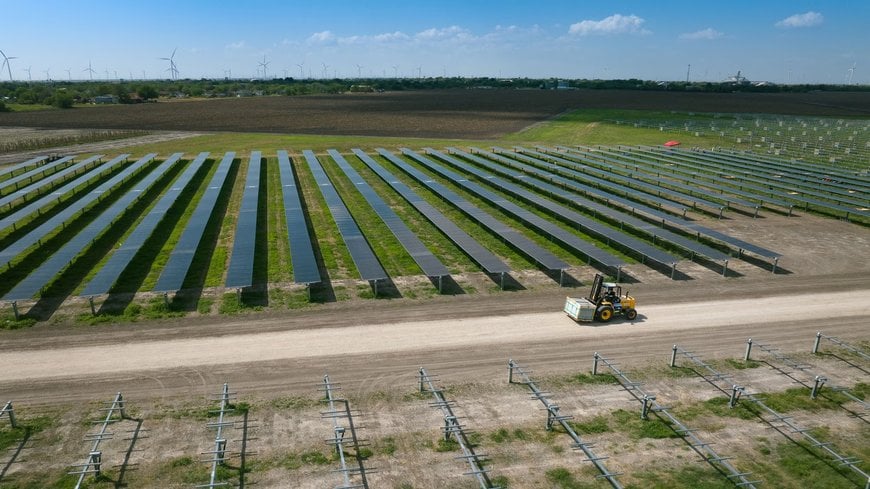
BP’s most recent solar installation – the Peacock Solar project in Texas. Image source: BP Plc
Conclusion
The oil and gas industry’s digital transformation journey is on course and at various stages of implementation across all stakeholders. It is not going to be an easy transition as the industry has thousands of legacy plants and installations, but technology has solutions and the industry understands this to be the only way forward. As the sector continues to embrace digital technologies, the possibilities for optimisation and growth are limitless, and the future of the oil and gas industry looks better than ever. However, that is just one part of the transformation story. The energy transition is the elephant in the room. Notwithstanding all the claims and initiatives by oil majors regarding their commitment to Net Zero, critics point out that most of the initiatives are far too little compared to the enormous revenues collectively earned by the companies. The target to limit temperature rise to 1.5% by the end of the century is achievable, but only with concerted action from all stakeholders. The 2030 deadline to cut emissions by half is just 7 years away, and with the present state of progress, looks difficult to achieve. While technology helps mankind to do more with less, at this critical juncture logic says much more needs to be done and that calls for huge efforts from every government and industry.
References
1. http://www.ipt.ntnu.no/~kleppe/pub/ie2006/pdfs/spe100710.pdf
2. https://guides.loc.gov/oil-and-gas-industry/upstream
3. https://www.globaldata.com/store/report/oil-and-gas-predictive-maintenance-theme-analysis/
4. https://www.vakt.com/press/june-2018-vakt-is-launched-to-re-imagine-global-commodities-through-the-use-of-blockchain
5. https://www.iea.org/reports/the-oil-and-gas-industry-in-energy-transitions
6. https://reports.shell.com/energy-transition-progress-report/2022/introduction/our-progress-towards-net-zero.html

